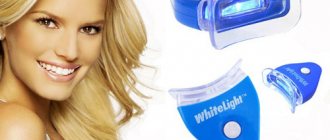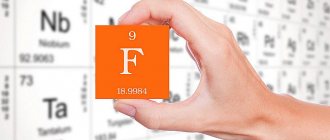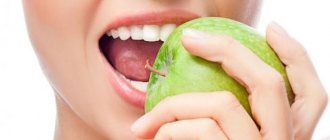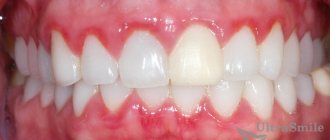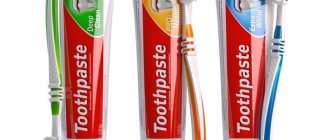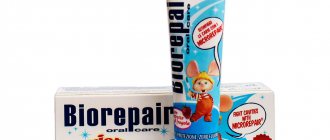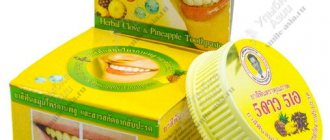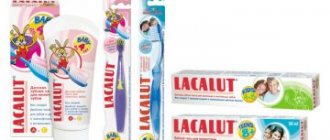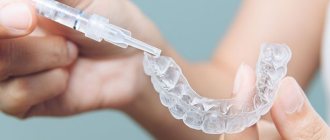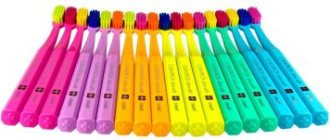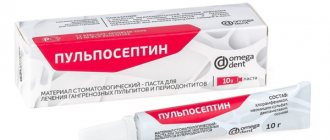The choice of whitening toothpaste depends on the condition of the tooth enamel, lifestyle (tendency to drink large amounts of coffee, tea, smoking), oral health (presence of caries, inflammatory processes, gum disease).
Home whitening with toothpastes and kits is convenient and does not require dental equipment. The result is visible 30-60 minutes after cleaning. Lightening efficiency: up to three tones. Whitening should be carried out in a course of procedures: daily brushing 2-3 times a week for 30-60 days with a break of at least 30 days before repeating.
Whitening and brightening toothpastes
Depending on the main active component, whitening toothpastes are divided into two types:
Whitening
Carbamide peroxide is used as an active substance, which, when reacting with water and saliva when brushing teeth, produces active oxygen, which serves as an effective means for whitening tooth enamel. Atomic oxygen molecules penetrate deep into the structure of hard tooth tissue and discolor pigments (chemical whitening effect). Examples of toothpastes with whitening action: REMBRANDT plus, SPLAT Extreme White, ROCS PRO - “Oxygen whitening”.
| Manufacturer: USA Ingredients: urea peroxide, Citroxain®, fluorophosphate, polishing and abrasive agents. Fluorine content: 1160 ppm. Abrasive concentration: 70 RDA. Price: ~500 rub. | Manufacturer: Russia Ingredients: urea peroxide (granulated), silicon dioxide, fluorophosphate, polishing and abrasive agents. Fluorine content: 500 ppm. Price: ~200 rub. | Manufacturer: Russia Ingredients: carbamide peroxide, calcium, polishing and abrasive agents. Fluorine content: none. Price: ~300 rub. Recommended in combination with “ROCS PRO - delicate whitening” |
Lightening
The principle of operation of the composition is to remove plaque and pigmentation of the upper layer of tooth enamel. Lightening occurs as a result of the action of enzymatic substances contained in toothpaste and effective against plaque. The list of active enzymes includes: papain (based on papaya fruits), bromelain (based on pineapple fruits). The composition of lightening pastes additionally includes: sodium pyrophosphate (an inorganic compound, effective in combating plaque), abrasive and polishing particles: oxide, silicon dioxide. Examples of toothpastes with a brightening effect: Colgate “Complex Whitening”, “New Pearl – Whitening”, Blendamed 3D White, ROCS PRO – “Delicate Whitening”, ROCS – “Sensational Whitening”, “SPLAT Whitening Plus”, PRESIDENT White, PRESIDENT White Plus , LACALUT White.
Types of whitening pastes by composition
Depending on the composition, the whitening properties of toothpaste manifest themselves to varying degrees. A quality product must contain the following active ingredients:
- Fluorides. These are substances added to pastes for adults. The fluoride volume must be at least 1450 ppm. The presence of fluoride and its components strengthens hard tissues, reduces tooth sensitivity, and prevents the development of caries.
- Xylitol. Pastes with a xylitol content of 6 to 10% are effective. The component is involved in the processes of combating yellow plaque and destroying microbes that cause caries.
Toothpaste containing sodium lauryl sulfate is not recommended. The component irritates the mucous membranes and, with regular exposure, causes inflammation and abscesses.
Whitening pastes have an abrasiveness coefficient - this is the percentage of solid particles in the composition. Abrasive chips clean teeth, whiten enamel, but scratch it: you should not buy products with an abrasiveness higher than 70 points. The value is indicated on the packaging.
The dentist will help you choose a whitening paste: the doctor will assess the condition of the teeth and gums; will give recommendations on composition. Lightening pastes are more expensive than hygienic and preventive pastes. The products are intended for one-time use (no more than 1-3 times a week for a course of up to 2 months).
Measuring the abrasiveness of a file for natural nails
So, what kind of files are needed for natural nails? Typically, the abrasiveness of nail files should be 180/240 grit. However, it is best to stick to another indicator - 240. What is the reason for this? If the degree of rigidity is high, this means that the file will have a gentle effect on the nail plate.
Typically, a high index file can be used for polishing, but not for correction. If the hardness of a manicure tool starts from 900 grit and ends at 1200, this means that it is more suitable for grinding.
Contraindications for teeth whitening
Lightening enamel with toothpaste or other means is not recommended for:
- Presence of caries;
- Enamel cracks;
- “Sensitive teeth” syndrome;
- Pregnancy, breastfeeding;
- Installed bridge structures, braces, bite alignment systems.
Whitening is carried out after eliminating the listed contraindications at home - with toothpaste or at the dentist. A doctor's consultation is required before the procedure.
Home enamel lightening is aimed at returning teeth to their natural color, removing tartar deposits and darkening.
How to choose an abrasive nail file?
It’s not always possible to come to the store and buy a nail file you like just because, for example, it’s pink. Here it is important to consider the thickness of the nail plate. To do this, press your thumb on the very tip of your index nail. What will we get? This way you can easily bend the nail without feeling any pain. This indicates that the nail has a thin structure. If it still hurts a little, but the plate itself does not bend, the nail is thick.
You can also determine the thickness by color. In this case, unpainted nails are brought to the light. A thick plate will appear cloudy, while a thin plate will appear translucent. Now let's get down to business. For thin nails, it is better to choose ceramic or glass files that will not contribute to delamination. Ceramic may slightly damage such a nail.
If the thickness is average, then you should pay attention to files for natural nails, the abrasiveness of which exceeds 120 grit. Those with thick nail plates can please themselves with metal files. This way you can choose the most suitable tool for yourself.
Types of whitening toothpastes according to the principle of action
Whitening toothpastes are divided into two groups.
1. Mechanical cleaning - these are abrasive compounds containing solid particles from 10 to 50%. Abrasives are used for grinding and polishing hard tooth tissues. Common types: silicon dioxide, calcium carbonate (chalk). The latter option is found in economy versions of pastes; when used, it neutralizes the beneficial qualities of fluorides. Cons: solid particles scratch the enamel and promote abrasion; negatively affect the gums, forming microtraumas.
2. Chemical cleaning - chemical components are responsible for enamel whitening: oxidizing agents. Pastes for home use use gels based on carbamide peroxide with different percentages of the active substance (from 10% to 25%). DayWhite ACP chemical enamel lightening kits contain concentrated ten percent hydrogen peroxide.
Carbamide peroxide for teeth whitening
Based on studies conducted by independent organizations, among whitening pastes, “ROCS PRO - Oxygen Whitening” demonstrates the greatest effectiveness. The composition contains carbamide peroxide - a substance that affects the deep layers of hard tooth tissue, discoloring pigments; The use of toothpaste allows you to achieve lightening by 2-3 shades in 30 days of regular use. The composition is safe: does not contain fluorides, parabens, artificial colors, sodium lauryl sulfate.
This is an active complex created on the basis of oxygen and urea. The last component is responsible for the permeability of the enamel and promotes deep penetration of oxygen into the hard tissue of the tooth. Radicals of oxygen compounds lighten the enamel during the cleaning process; Urea decomposes into components: carbon dioxide, urea (alkaline medium), ammonia. Carbamide peroxide, upon contact with water, enters into a chemical reaction, as a result of which oxygen is released and decomposition products are formed. A ten percent urea-based gel is converted into a 3.5 percent peroxide solution.
Cons: thinning of enamel, increased sensitivity of hard tissues.
What you should know about carbamide peroxide pastes
- It is recommended to use such pastes after professional teeth cleaning at the dentist. Not all dental plaque can be removed with a toothbrush. The remaining plaque and tartar will not allow the paste to evenly lighten the enamel, and there is a risk of stained teeth.
- It should be borne in mind that the active substance will not be able to whiten fillings, metal-ceramic and ceramic crowns. Only natural enamel is subjected to lightening. As a result, previously invisible fillings may appear, and beautiful crowns will appear dark against the background of lighter adjacent teeth.
- After completing a whitening course using products containing carbamide peroxide, it is recommended to switch to pastes containing calcium for a couple of months. And only after that use fluoride-containing pastes. This approach will strengthen weakened enamel.
Does the abrasiveness of nail files depend on the material?
As for the material from which nail files are usually made, it can be either artificial or natural.:
- Glass files are considered one of the best for correcting natural nails. And all because they do not cause any harm to the nails. In addition, such tools can be easily washed.
- Crystal manicure tools also cut very well. With them it is possible to create smooth and soft edges. Typically, such nails no longer require further polishing.
- Fabric files are usually flexible, and their middle part is synthetic, plastic or wood. This product is not cheap.
- Files with polyethylene foam are usually called buffs. They are needed for polishing. This tool is easy to clean and does not absorb water.
- There are also nail files with spraying. They are usually ceramic. With such tools you can create different shapes for your nails, as well as remove rough skin near the nails.
For example, it is worth considering the classification of files according to abrasive coating:
- If the file is covered with pomegranate particles, then, as a rule, it has a wooden frame. But such a manicure tool will not be cheap. In addition, garnet abrasive particles are not sharp, which means that the file will last a long time.
- The files are also coated with a silicon hybrid. As a rule, these are black-blue crystals with hard and sharp edges. With the help of such a nail file it is easy to give any shape.
- Silicon carbide is also used for coating. Due to the zinc coating, the entire surface of such a file will be smooth. In addition, there will be no near-abrasive depressions, which means that no dust will accumulate.
- Aluminum oxide crystals are not as sharp as those of the silicon hybrid. The file itself is hard and tough. In another way it is called a saw stone.
Whitening Toothpaste Ingredients
- Abrasives - hard particles for removing plaque and dark stains;
- Silicic acid (dioxide) is a hypoallergenic abrasive;
- Calcium carbonate is a coarse abrasive that scratches enamel and has a hard structure. For visible whitening effect.
- Titanium dioxide is a gentle abrasive, added in low proportions;
- Polyethylene - present in the form of balls in economy segment pastes. The use is not recommended due to the risk of abrasive building up in microcracks and further development of bacteria.
- Enzymes are chemical components for breaking down plaque and hard deposits. These are: papain - fruit acid from papaya fruits, which destroys the hard protein structures of deposits; bromelain is a pineapple acid that has a similar principle of action.
- Polyphosphates are substances that remove tartar, but lead to gradual demineralization of the enamel.
- Natural abrasives - clay, carbon (activated, wood), soda.
Whitening teeth with paste: questions and answers
Do enzymes in toothpaste help whiten teeth?
Yes, by removing plaque on the enamel. Lightening will occur if the teeth initially had a healthy color, which darkened as a result of plaque accumulation.
What substances whiten teeth
Abrasive particles for grinding and polishing enamel; chemical components (carbamide peroxide), plant enzymes to combat yellow plaque. Aluminum chloride, oxalic acid, peroxide esters, hydrogen peroxide, sodium hypophosphate are also used.
Are fruit acids effective for whitening teeth?
Bromelain and papain are natural enzymes that break down proteins. Contained in whitening pastes (Splat Professional in the form of the White system complex). The brightening effect is clinically proven: at least one tone on the Vitapan scale in 30 days of use.
What is abrasiveness?
The word “abrasiveness” refers to the hardness of the nail file. High-quality treatment of the nail plate largely depends on the degree of rigidity with which the file is chosen. After all, if it does not meet the norm, you can damage the nail.
How is the abrasiveness of files measured? Usually in grits. This unit of measurement clearly demonstrates the accumulation of those same abrasive particles on the surface of the manicure tool used. The lower the indicator, the greater the rigidity.
It is not advisable to choose a nail file simply by eye; it is better to decide what exactly it is needed for. This makes it easy and hassle-free to select the appropriate degree of hardness.
Comparison of whitening toothpastes
The table below presents a comparative description of whitening compositions for cleaning teeth.
| The product's name | Blend-a-med 3D White Luxe | Colgate Optical White | White Glo |
| Manufacturer | Germany | China | Australia |
| RDA index | 205 | not specified | 110 |
| Active substances | glycerin, silicon dioxide, sodium hexametaphosphate, sodium lauryl sulfate, cocamidopropyl betaine, trisodium phosphate | hydrated silica, sorbitol, glycerin, tetrapotassium pyrophosphate, sodium lauryl sulfate | calcium carbonate, sorbitol, glycerin, silicon dioxide, sodium lauryl sulfate, carboxymethyl hydroxyethylcellulose, carrageenan, titanium dioxide |
| Whitening type | superficial | superficial | superficial |
| Whitening result | 1-1.5 tones | 1-1.5 tones | 1-1.5 tones |
| Price for 100 ml: (rub.) | 180 | 219 | 215 |
| The product's name | Lion Zact | Perioe Pumping Whitening | Splat Professional White Plus |
| Manufacturer | South Korea | South Korea | Russia |
| RDA index | not specified | 100 | 150 |
| Active substances | Calcium hydrogen phosphate, aluminum oxide (cleaning/polishing agent) | glycerin, hydrated silica, sodium lauryl sulfate | hydrogenated starch hydrolysate, hydrated silica, potassium nitrate, dicalcium phosphate dihydrate, calcium pyrophosphate, pentasodium triphosphate |
| Whitening type | deep | deep | superficial |
| Whitening result | 2-3 tones | 2-3 tones | 1-1.5 tones |
| Price for 100 ml: (rub.) | 582 | 529 | 168 |
An independent survey of 40 medical students was conducted on the website survio.com, which revealed the three most popular brands of whitening pastes:
- Colgate - effect after a month of use: enamel whitening by 2-3 tones; safe for teeth and gums if you follow the manufacturer's recommendations.
- Splat Extreme White, ROCS PRO (contain carbamide peroxide) - whitening by 2-3 tones in 2-30 days;
- Colgate “Comprehensive Whitening”, ROCS “Sensational Whitening”, Splat “Whitening Plus” (based on abrasives, fruit enzymes) - whitening by 1-2 tones in 30-60 days.
Before choosing a whitening toothpaste
- go to the dentist to assess the condition of your teeth;
- make sure there are no contraindications;
- study the composition.
The dentist will conduct an examination and examination, help you decide on the method of teeth whitening and cleaning; The doctor will suggest toothpaste, an enamel whitening system at home, or chemical whitening in a dental clinic, depending on the condition of the patient’s teeth.
Home whitening is carried out in courses that include daily brushing of teeth with whitening paste 2 times a day for 30 days. The course can be extended for a specified period if there is no result. After a course of whitening, a break should be taken for a period of at least a month, during which the patient is recommended to use products containing active ingredients for the remineralization of tooth enamel.
The use of abrasive toothpastes allows you to lighten the enamel by 1-1.5 tones by removing plaque. Chemical whitening pastes based on urea dioxide demonstrate the effectiveness of whitening by 2-3 shades. The compositions are used in dentistry in professional teeth whitening systems.
Bottom line
Until recently, dental whitening preparations were a luxury item, and citizens of our country visited the dentist’s office to whiten their teeth. Today, abrasive toothpaste can be bought at any pharmacy at a reasonable price. However, when purchasing whitening products, you need to remember that they are suitable for people with natural white enamel darkened by coffee or cigarettes. These medications will not help people with naturally yellow enamel.
The best pastes are those that contain abrasive and bleaching components. If the preparations do not contain minerals that nourish teeth (fluorine, calcium), additional measures should be taken to mineralize the teeth. Immediately after brushing your teeth, you should not drink coffee or eat foods that can stain the enamel.
Abrasive pastes are strictly prohibited for children under 12-14 years of age, as they will lead to caries and gum problems. The preparations contain potent substances that destroy the fragile structure of the enamel.
Dentists do not recommend using potent substances on an ongoing basis, so abrasive paste should be alternated with regular ones. People with sensitive teeth or sore gums should not use abrasive pastes, as their use will aggravate the sensitivity and have a negative effect on the gums.
Sources used:
- Kopetsky I. S., Pobozhyeva L. V. Modern therapeutic and prophylactic means for individual oral hygiene // General Medicine. — 2012.
- The European Academy of Pediatric Dentistry (USA)
- Fedorov, Yu. A. Oral hygiene / Yu.A. Fedorov. — M.: Medicine
